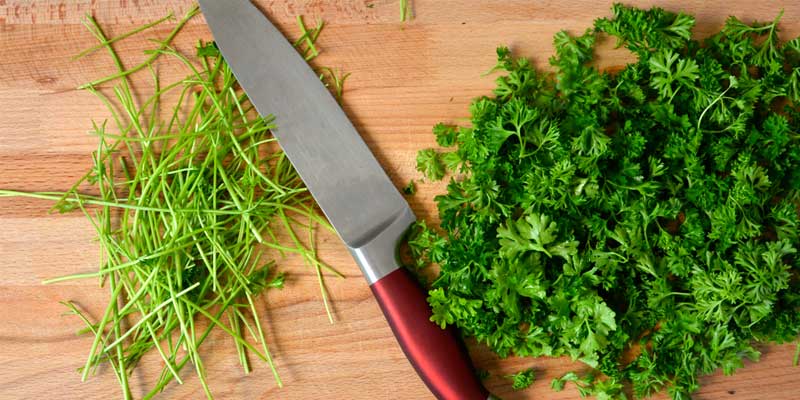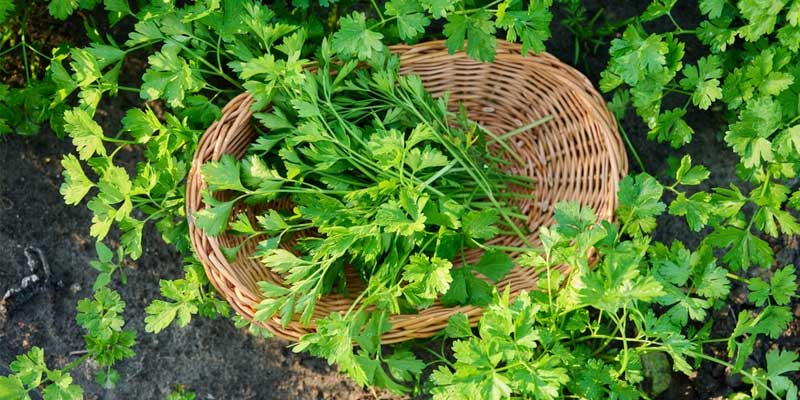Better Websites to own 2025
Jun 11, 2025

Parsley is one of the most versatile herbs. We love them in our pasta because it makes prepared sauces taste fresher. They’re great with chicken, potatoes, and even herbed bread! But they spoil quickly. Here’s how to freeze dry parsley so you’ll have its fresh, mildly pungent flavor anytime with less waste.
Wash the herb under cold running water, especially if you bought it from a grocery store. You can put it in a colander and let the parsley sprigs drip dry. Or you can use your trusty salad spinner to take out excess water faster. Dry them on paper or kitchen towels to get any excess water off.
You can use your knife in a hacking motion to cut the leaves out of the stems. But you can also do this using a de-stemmer or the large holes of your grater. Just push the stem through and pull on it until the leaves and stem separate.
Pre-freezing is optional because parsley doesn’t have much water like peaches and oranges. But freezing can help shorten your freeze-drying time.
Also, it helps maintain your assembly line of food to freeze dry. While you’re freeze-drying something that’s taking a while, at least you’ve got your parsley frozen and ready.
Deep freezers work, but if you want to preserve the herb’s structure, food-grade liquid nitrogen and dry ice will work wonders.

Deep freezers slowly freeze your food, creating large ice crystals that jab through the cell walls. This is why your frozen herbs look like a wet, wilted mess when it thaws, much like what happened to some spots in our spinach.
Food-grade liquid nitrogen flash freezes your herbs. The instant the food touches the liquid nitrogen, it’s frozen. This produces tiny ice crystals and doesn’t damage the leaves’ cellular structure. Works almost the same for food-grade dry ice because they’re colder than your deep freezer.
If you’re going to pre-freeze your herb, pre-freeze your trays too. You keep the freeze-dryer temperature stable by introducing cold food and trays in the chamber.
The reason why we love using our Harvest Right is that it makes freeze-drying a no-brainer.
Herbs are one of the foods that freeze dry fast. Freeze-drying parsley usually takes 16-24 hours, depending on weather conditions. It could take longer if you got other food items freeze-drying.
The best way to test your herbs is when the trays are still warm. The first test is to touch the leaves. They should feel dry, crumbly, and airy and give off a rustling sound like dried leaves. A simple press would break the leaves, turning them almost powdery.
If any leaves feel moist, cold, and soft, put the trays back for 1-3 hours of extra dry time.

You can store them as they are, keeping the leaves whole. This keeps the oils in the leaves, giving you a better tasting freeze dried herb whenever you use it. This is best if you want large pieces of parsley in your dish.
You can also pulse it a few times in your food processor if you want granulated parsley. Your kitchen will smell heavenly when you do this, so be warned.
If you don’t like the stems, this is the perfect time to take them out. The leaves separate quite easily with minimal pressure, and you can pick them out. Stems have a stronger, more pungent flavor, which can help you have a “cleaner” freeze-dried parsley taste.
Then you can choose whether to store them in Mylar bags or Mason jars. Mylar bags are excellent when you want to store your herbs long-term. You can create sections in your large freeze-dryer bag using your heat sealer. This way, you don’t have to expose unneeded freeze-dried parsley unnecessarily.
But if you’re crazy about parsley and use it in almost any dish, Mason jars work well. They’re easy to open and close, and there are even small sizes for freeze-dried parsley on demand.
Whatever storage solution you choose, make sure you go for air-tight ones that keep away moisture. Oxygen absorbers are also a must, and you need to replace them each time you open your container. About 1-2 or the 300cc packs work well for each gallon-size container.
You can use it the same way as you do fresh parsley. Litehouse recommends that for their freeze-dried parsley that you use 1 tablespoon for every 1 tablespoon of fresh. But if you’re trying out freeze-dried herb for the first time, we recommend you go a bit less than that. It’s easier to add more than to “deaden” the taste of herbs.
What do you want to do with your freeze-dried parsley? Let us know in the comment section!
Also, subscribe to our YouTube Channel and watch out for new freeze-drying videos!